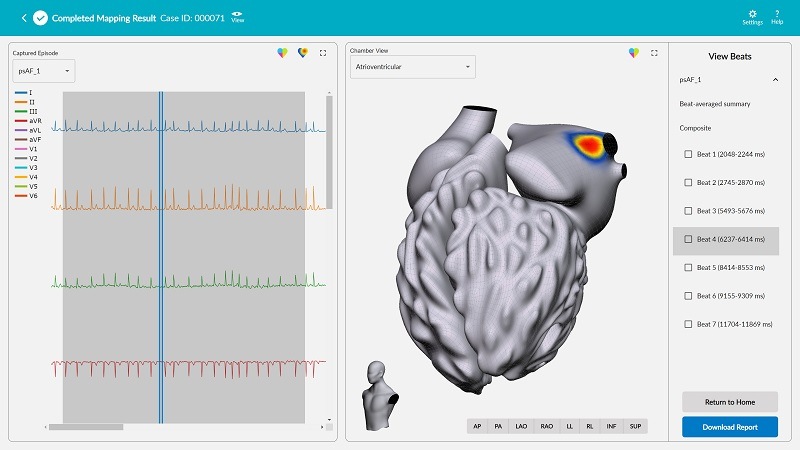 Vektor Medical has announced study results that demonstrate a reduction in total procedural duration, fluoroscopy use, and cost after implementation of vMap, its cardiac mapping technology that uses only 12-lead electrocardiogram (ECG) data.
Vektor Medical has announced study results that demonstrate a reduction in total procedural duration, fluoroscopy use, and cost after implementation of vMap, its cardiac mapping technology that uses only 12-lead electrocardiogram (ECG) data.
The research was presented by Avinash Toomu (UC San Diego Health, San Diego, USA) at the American College of Physicians Southern California Chapters 1, 2, 3 Poster Competition and Scientific Program (8 October, San Diego, USA), where the presentation won first place in the research category.
vMap provides physicians the ability to non-invasively map potential arrhythmia source locations and guide non-invasive therapy planning for patients with cardiac arrhythmias, Vektor Medical said in a press release.
In the presentation, Toomu presented findings from a retrospective, case-control study evaluating the hypothesis that non-invasive computational ECG mapping reduces overall procedure time, fluoroscopy use, and cost in the electrophysiology lab setting. vMap exhibited a reduction in total procedure duration of 68 minutes (227±54 vs. 295±77 minutes, p<0.001), reduction in fluoroscopy time of 16.3 minutes (18.4±13.9 vs. 34.7±16.6 minutes, p<0.001), and EP lab costs (US$2,267). Use of vMap was also associated with a reduced use of 64-electrode basket catheters in atrial fibrillation ablation cases (p=0.025).
“Physicians and engineers intentionally designed vMap to address shortcomings inherent to current mapping procedures, including risks from anaesthesia and fluoroscopy exposure,” said Toomu. “These results signify a great step forward to address these challenges and add to the existing clinical body of evidence for vMap. I am delighted to be a part of the efforts to translate novel technologies to the clinical setting and help the many patients with cardiac arrhythmias.”
vMap is cleared by the US Food and Drug Administration (FDA) to identify potential arrhythmia source locations anywhere in the heart using on the ECG. In September 2022, Circulation: Arrhythmia and Electrophysiology published data validating the system’s accuracy in identifying nine atrial and ventricular arrhythmias and pacing types across all four heart chambers.












